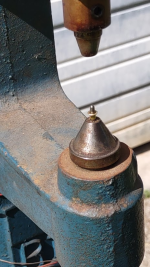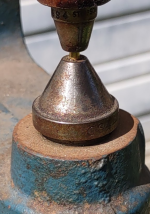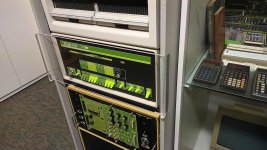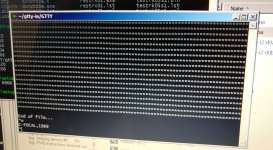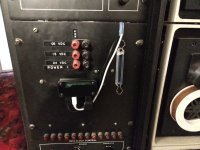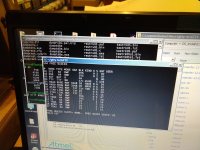After playing for a little with the 4K BASIC discovered by daver2 and described in the thread "DEC PDP-8/E EDUSYSTEM-10 4KW BASIC interpreter" I started having strange glitches with my PDP-8/e. Software which worked previously halted randomly. After a few more minutes the system became completely unusable. Not even a simple count program would run anymore.
I was about to start swapping boards for my good spares when I thought I better first check the power rails on the H724A power supply. Surprisingly the -15V rail was about -0.8V and the power-good signal was about 0.1V. The 5V rail was good and the +15V rail was about +17V.
I removed the power-supply from the PDP-8/e chassis to get access to the two regulator boards A1 and A2. It would be nicer if these would be accessible without having the remove the heavy and awkward power supply from the 8/e chassis.
On the A1 board responsible for regulating the -15V rail I then soldered some wires to the LM723 regulator (TO-100 package) to be able to check the interesting pins 2, 3, 4, 5 and 6 (pin 5 is V-).
V_ref on pin 4 was only 2.7V instead of the expected 7V. Pins 2 (inverting input) and 3 (non-inverting input) were very different. This means V_out on pin 6 should drive the pass-through transistor hard, but it was only about 0.2V which is too low for the external pass-through transistor to even start to conduct.
I concluded the LM723 had died. It looked somewhat corroded anyway. After swapping in a new LM723 I plugged regulator board A1 back into the H724A I was convinced that I fixed it, but disappointingly the -15V was still only about -0.8V.
There is not much else in the circuit other than a few resistors and a few capacitors (careful - not all are shown in schematic in the maintenance manual - reference the engineering drawings to see the accurate circuit). With A1 on the bench I checked all the resistors and the pot R5 with my multimeter and they looked fine.
Finally I started checking the 6 ceramic capacitors (10 nF 100V) and the 1uF 35V electrolytic cap C2. As it turned out C3 was conducting at about 700 Ohm both in and out of circuit.
I replaced all 7 capacitors on the board A1. When I plugged the repaired board A1 back into the H724A and powered on, all the rail were back at their nominal value including the power-good signal.
I finished the job by adjusting the 5V and -15V rails with the H724A inside the 8/e chassis sitting on two wooden blocks to raise it sufficiently to expose the regulator boards A1 and A2. The +15V rails just follows the -15V rails so there is nothing to adjust.
So what I think happened is that C3 started glitching before failing completely.
Now with everything re-assembled my PDP-8/e is nice and stable again.
My conclusion is - be careful when you run 4K BASIC - it might kill your power supply.

Tom

